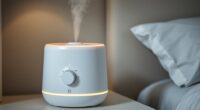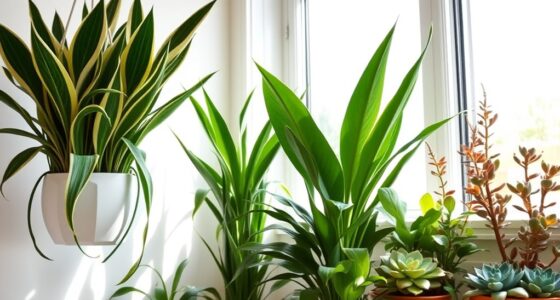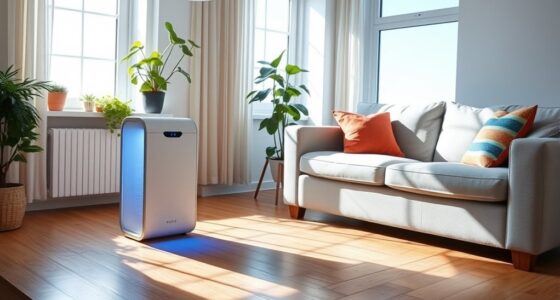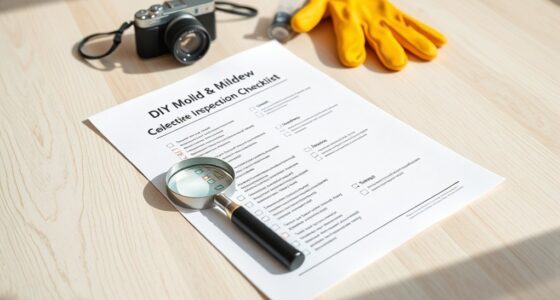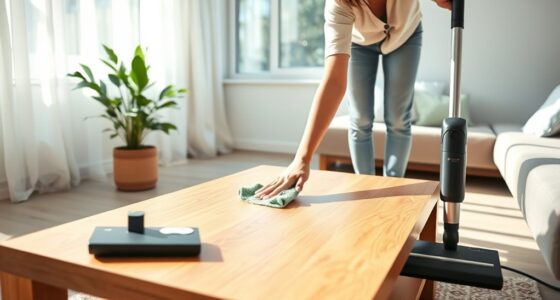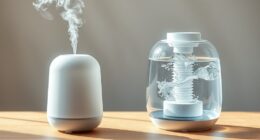To measure your room size for air purifier coverage, start by measuring the length, width, and height of the space, including any alcoves or high ceilings. Calculate the total volume by multiplying these measurements, especially if the ceiling is vaulted or irregular. Comparing this volume to the purifier’s capacity guarantees you choose the right size for effective air cleaning. Continue exploring to learn more about accurate measurement methods and ideal sizing tips.
Key Takeaways
- Measure the room’s length, width, and height to calculate total volume for accurate purifier sizing.
- Include all structural features like alcoves, nooks, or high ceilings in your measurements.
- Use the formula: volume = length × width × height, especially for rooms with irregular shapes or vaulted ceilings.
- Match the air purifier’s coverage specifications to the room’s calculated volume for optimal efficiency.
- Consider room features and volume to select an energy-efficient purifier that effectively improves air quality.
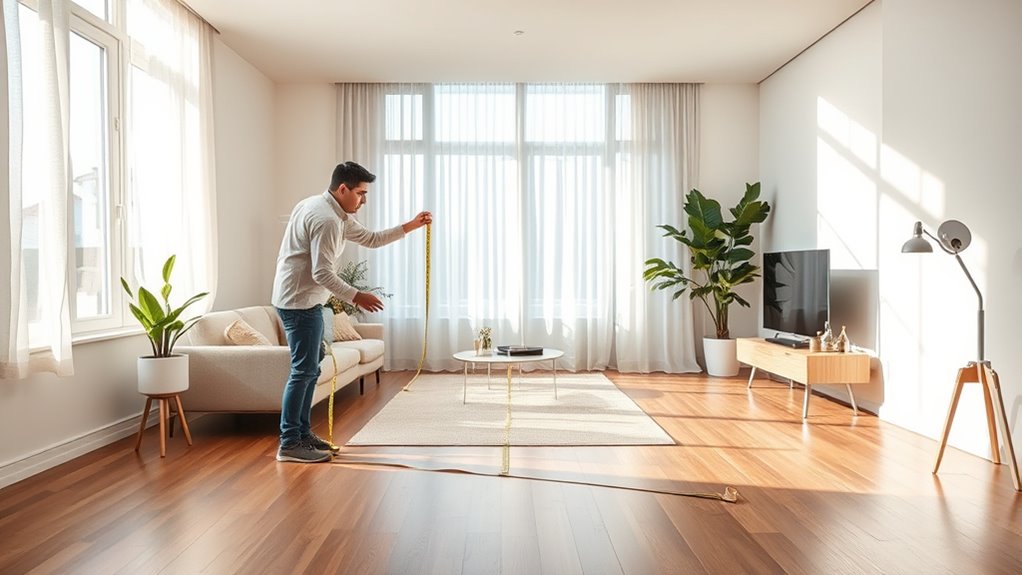
Knowing your room dimensions also plays a key role in guaranteeing proper air exchange. Air exchange refers to how often the air inside your room gets replaced or filtered. An air purifier with a capacity suited to your room size will facilitate a higher air exchange rate, meaning cleaner air more frequently. If your room is larger than the purifier’s recommended coverage area, you might find that the air quality doesn’t improve as quickly or effectively. Conversely, choosing a device rated for a smaller space could result in over-filtering, which isn’t necessary and might waste energy.
When measuring, don’t forget to include any structural features that might affect airflow, such as alcoves, nooks, or high ceilings. High ceilings can effectively increase the room’s volume, making it larger than what simple square footage calculations suggest. For rooms with vaulted ceilings or irregular shapes, consider calculating the total volume by multiplying length, width, and height. This volume measurement ensures you select an air purifier capable of handling the entire air volume, not just the footprint.
Knowing your room’s dimensions also helps when evaluating the device’s specifications. Most air purifiers list their coverage area based on square footage, so matching this to your room size guarantees peak performance. Remember, an air purifier’s efficiency depends on how well it can circulate and filter the air within its rated coverage. Proper measurements help you avoid under- or overestimating your needs, resulting in better air quality and more effective purification.
Additionally, understanding the room volume can help you select the most energy-efficient and effective air purifier, especially in spaces with complex layouts or high ceilings.
Frequently Asked Questions
How Does Ceiling Height Affect Air Purifier Coverage?
Ceiling height impacts air purifier coverage because higher ceilings alter airflow dynamics, making it harder for the purifier to circulate air evenly. When ceilings are taller, the air tends to stratify, reducing filtration efficiency. You’ll need a purifier with a higher Clean Air Delivery Rate (CADR) or consider multiple units to guarantee ideal coverage. Remember, understanding how ceiling height influences airflow helps you select the right purifier for your space.
Can Furniture Placement Impact Air Purifier Efficiency?
Think of your room as a living organism, where furniture arrangement acts like veins guiding airflow. If you block pathways with bulky furniture, you’re creating airflow obstruction, which hampers your air purifier’s efficiency. To keep the flow smooth, arrange furniture to allow unobstructed pathways, ensuring the purifier can circulate purified air evenly throughout the space. This simple step can markedly boost your air quality and purifier performance.
How Often Should I Remeasure My Room Size?
You should remeasure your room size whenever there’s a significant change, like remodeling or moving furniture, to guarantee measurement accuracy. Regularly check your air purifier’s coverage needs, especially if your room’s dimensions change or if you notice reduced air quality. Proper device calibration and accurate measurements help your purifier work efficiently, so stay attentive to any shifts that might affect its performance and remeasure as needed.
Do Open Floor Plans Require Multiple Air Purifiers?
Many believe a single purifier suffices for open floor plans, but airflow optimization suggests otherwise. Open spaces often have complex air circulation, making multiple purifiers more effective. Proper purifier placement is vital; you should position units where airflow converges. Investigating airflow patterns confirms that multiple purifiers can better cover large, connected areas, ensuring cleaner air throughout your open floor plan.
How Do Seasonal Changes Affect Room Size Considerations?
Seasonal airflow and window ventilation influence how you consider room size for air purifiers. During winter, closed windows reduce airflow, so you might need a more powerful purifier for the same space. In summer, increased window ventilation can help improve air quality naturally, but it also means dust and pollen enter more easily. Adjust your purifier size based on seasonal airflow changes to maintain ideal air quality year-round.
Conclusion
Now that you know how to measure your room, you’re like a captain steering your ship to cleaner air. Just remember, choosing the right-sized air purifier is the key to sailing smoothly through allergy season or pollution days. Think of your space as a canvas—accurately measuring guarantees your purifier covers every corner. With these simple steps, you’re ready to breathe easier, transforming your room into a fresh oasis amidst the chaos outside.

